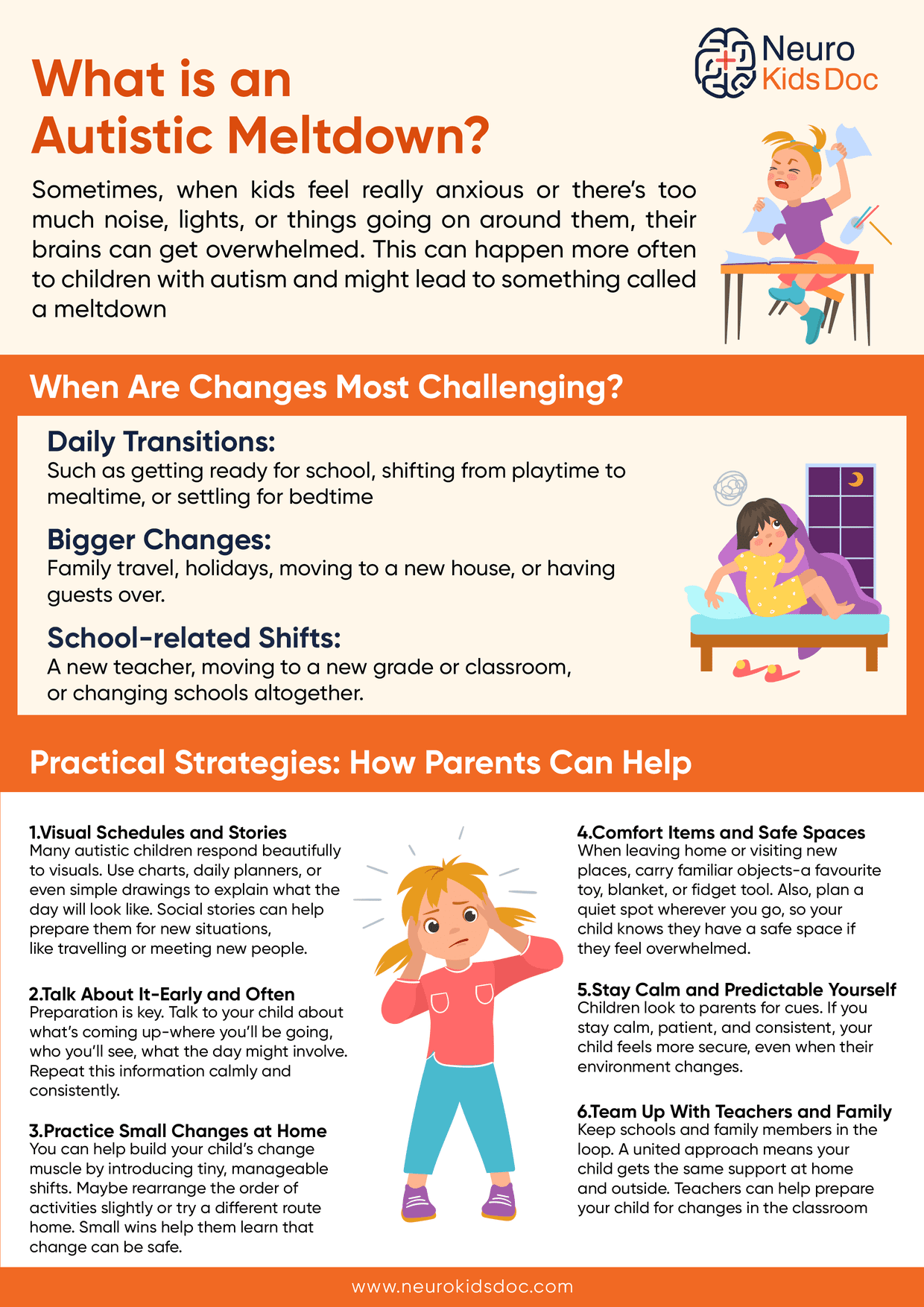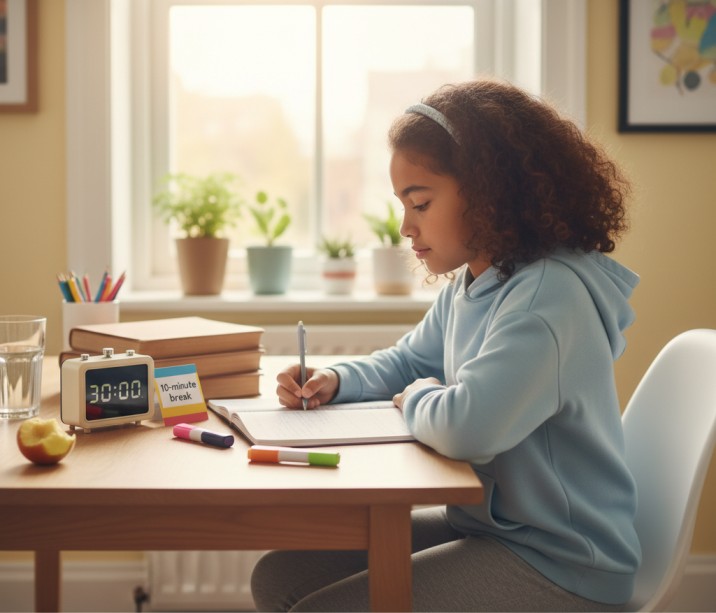“My child had a meltdown just because we changed dinner plans by 10 minutes… Is this normal?”
If you’re a parent of a child on the autism spectrum, you’ve likely lived a version of this moment. A slightly delayed meal, an unexpected visitor, a different route home, and suddenly, your calm day spirals into tears, frustration, or a full-blown meltdown.
In this article, I’ll explain why routine matters so much for children with autism, the kinds of changes that can trigger stress, and simple, science-backed strategies you can start using today.
Let’s help your child feel safe, even when life changes.
Why Routine Feels So Safe
Please know this: you are not alone, and your child is not “bad” or “misbehaving.” For autistic children, routine is more than a habit; it’s a source of safety in a world that can feel unpredictable and overwhelming.
When that structure changes, their brain can struggle to cope, leading to intense reactions that can be hard for parents to watch, and even harder for children to experience.
Neurologically, these children often process information differently. Many have heightened sensory sensitivities. New sounds, sights, smells, or social expectations can quickly overload their nervous system.
When Are Changes Most Challenging?
Each child is unique, but some transitions tend to be more challenging than others:
- Daily Transitions: Such as getting ready for school, shifting from playtime to mealtime, or settling for bedtime.
- Bigger Changes: Family travel, holidays, moving to a new house, or having guests over.
- School-related Shifts: A new teacher, moving to a new grade or classroom, or changing schools altogether.
Understanding these common stress points is the first step in helping your child cope better.

Practical Strategies: How Parents Can Help
As a pediatric neurologist, I’ve walked alongside many families learning to navigate these moments. The comforting truth is that with understanding and a few practical tools, we can help our children manage change more smoothly — at home, at school, or on the move
- Visual Schedules and Stories
Many autistic children respond beautifully to visuals. Use charts, daily planners, or even simple drawings to explain what the day will look like. Social stories can help prepare them for new situations, like travelling or meeting new people. - Talk About It — Early and Often
Preparation is key. Talk to your child about what’s coming up — where you’ll be going, who you’ll see, what the day might involve. Repeat this information calmly and consistently. - Practice Small Changes at Home
You can help build your child’s change muscle by introducing tiny, manageable shifts. Maybe rearrange the order of activities slightly or try a different route home. Small wins help them learn that change can be safe. - Comfort Items and Safe Spaces
When leaving home or visiting new places, carry familiar objects — a favourite toy, blanket, or fidget tool. Also, plan a quiet spot wherever you go, so your child knows they have a safe space if they feel overwhelmed. - Stay Calm and Predictable Yourself
Children look to parents for cues. If you stay calm, patient, and consistent, your child feels more secure, even when their environment changes. - Team Up With Teachers and Family
Keep schools and family members in the loop. A united approach means your child gets the same support at home and outside. Teachers can help prepare your child for changes in the classroom too.
What If a Meltdown Happens Anyway?
Despite your best efforts, meltdowns can and do happen — and that’s okay. They are not your fault or your child’s fault. They’re the brain’s way of saying, “I’m overwhelmed.”
During a meltdown:
- Stay as calm as possible. Speak gently and limit extra instructions.
- Reduce sensory input if you can, such as turning down lights and lowering noise.
- Offer comfort but respect if they need space.
- Use sensory tools like noise-cancelling headphones or a weighted blanket.
- Focus on safety first. This is not the time for discipline; it’s about soothing the nervous system.
One Step at a Time
Transitions will always be part of life, and we cannot avoid change altogether. But with planning, patience, and teamwork, we can help our children handle it better, feel safer, and build confidence to face new situations.
If you are parenting a child on the autism spectrum, please know this: you are not alone. Small, thoughtful changes today can make big differences tomorrow.
Do you have a strategy that works for your family? Feel free to share your experience below — it might help another parent too.
Reach out to Dr. Aman PS Sohal, a trusted Pediatric Neurologist in Dubai, for specialised support in Autism, Epilepsy, and childhood neurological health.








